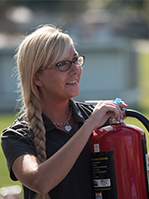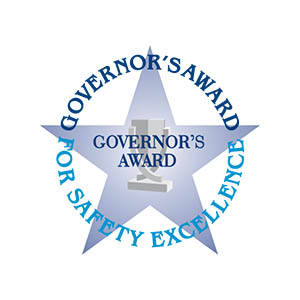Summertime, a season full of wonderful weather, flourishing foliage, and great gatherings with friends and family. With all the good things the summer season brings, it’s hard to think of anything bad. Most of us welcome the new season, but along with it comes a new hazard for work and play…heat.
Summertime means the entrance of a new hazard to which managers and employees need to give heightened awareness. Heat stress isn’t a new illness, yet unfortunately lives are still lost every year to heat-related illness, most specifically heat stroke.
Heat-related illnesses are widely under-reported, yet were still responsible for 43 fatalities and 2,410 serious injuries and illnesses in 2019, according to a 2021 Bureau of Labor Statistics (BLS) report. While this is less than in 2018, it is higher than the past seven-year average. So why are these numbers on the rise? Some might say record-high temperatures and heatwaves are to blame, while others may say it is negligent employers forcing their workers to work in hot temperatures. However, it is difficult to place blame on one specific root cause because all situations are different. One thing we do know is awareness is one of the best ways to preserve life.
According to OSHA and BLS records, at least a dozen companies are repeat heat-related illness offenders, failing to provide workers with adequate water and shade breaks resulting in their deaths. Until now, OSHA covered heat illness under the general requirement that workers are entitled to a “workplace free of known health and safety hazards.” Recognizing heat-related illnesses are a largely preventable threat, OSHA has expanded its efforts to combat the hazards associated with indoor and outdoor extreme heat exposure. OSHA published an Advance Notice of Proposed and Rulemaking on October 27, 2021, in preparation for new standard specifically addressing heat-related workplace concerns and has its next public meeting of the Heat Injury and Illness Prevent Work Group on June 30, 2022.
Many employees who suffer from heat-related illness are inexperienced, eager to impress their employers, and are willing to work harder and longer to do so. This results in an employee who is less likely to tap out when they start to feel signs and symptoms of heat stress. They are more likely to “press on” and “just get it done” than to take a break and cool off. This “tough” mindset is something we not only need to change, but also something we need to be aware of as managers, coworkers, and teammates.
To reduce the amount of heat-related illness, we need to be aware of not only our personal well-being, but we need to watch for the signs and symptoms in our employees and coworkers. Click here for common signs of heat-related illnesses and first aid measures. RETTEW also offers frequent First Aid/CPR classes, which review heat-related symptoms and treatments, along with other basic care measures valuable to any workplace.
Noah Hakes, GSP, Safety Technician
Additional Offerings
Safety training and consulting are only some of RETTEW’s 600+ services. Our safety team works hand in hand with engineers, scientists, project managers, and other technical experts at places such as manufacturing facilities, drill pads, and commercial construction sites. We are well respected in many industries and known for ensuring workers and equipment remain safe, which keeps your projects on track and your bottom line growing.

